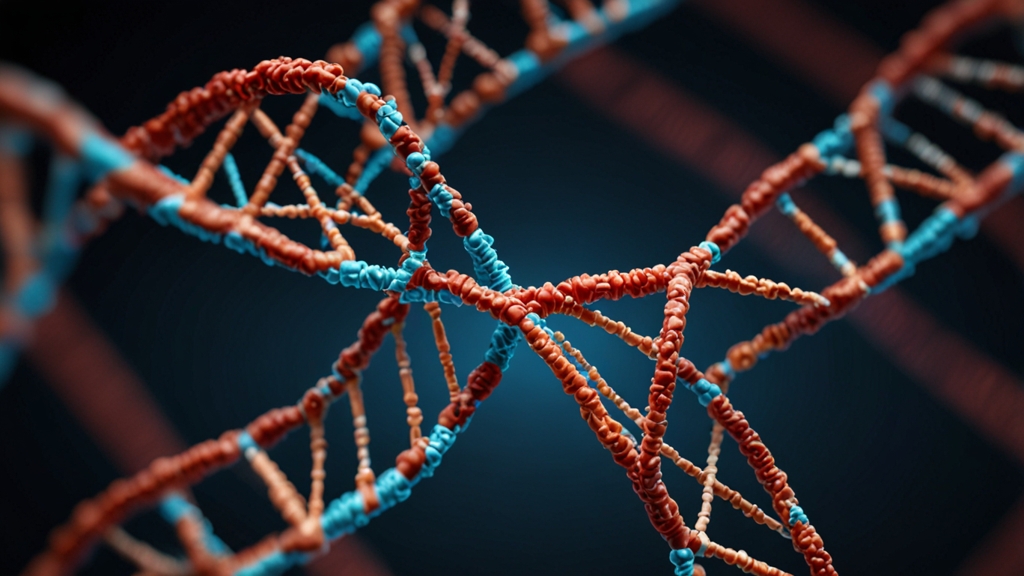Unlocking Human DNA: The Chemistry That Makes Us Who We Are
Deoxyribonucleic acid, or DNA, is often referred to as the blueprint of life. It holds the instructions needed for an organism to grow, develop, survive, and reproduce. In humans, DNA is a long molecule that contains our unique genetic code. The following article delves into the chemistry of DNA, unveiling its structure, function, and the remarkable role it plays in shaping our identities.
The Building Blocks of DNA
At its core, DNA is composed of two strands that coil around each other to form a double helix. Each strand is made up of smaller units called nucleotides. A nucleotide itself is made up of three components:
- A phosphate group
- A sugar molecule (deoxyribose)
- A nitrogenous base
There are four nitrogenous bases in DNA: adenine (A), thymine (T), cytosine (C), and guanine (G). These bases pair up in specific ways, with adenine pairing with thymine and cytosine pairing with guanine, forming complementary base pairs. This pairing is essential for DNA's ability to replicate and function properly.
The Double Helix
James Watson and Francis Crick are famously known for elucidating the double helix structure of DNA in 1953. This discovery was pivotal in understanding how genetic information is stored and transmitted. The double helix resembles a twisted ladder, with the phosphate and sugar molecules forming the sides of the ladder and the nitrogenous bases forming the rungs.
DNA Replication
For an organism to grow and reproduce, its DNA must be replicated correctly. During the process of replication, the double helix unwinds, and the two strands separate. Enzymes then help to create a new complementary strand for each original strand, resulting in two identical DNA molecules. This precise replication mechanism ensures that genetic information is passed down from one generation to the next with high fidelity.
Genes and Genetic Expression
Segments of DNA that encode specific proteins are called genes. These proteins are vital for various physiological functions and processes. But not all DNA sequences code for proteins; some sequences play regulatory roles, helping to control when and where specific genes are expressed.
"Understanding the genetic basis of life opens up possibilities for advancements in medicine, agriculture, and numerous other fields—changing our world in ways we have yet to fully comprehend."
The Impact of Mutations
While DNA replication is usually highly accurate, errors can occasionally occur. These errors, known as mutations, can have diverse effects. Some mutations may be harmless, while others can lead to genetic disorders or increase the risk of certain diseases. However, it's essential to recognize that mutations also contribute to genetic diversity, enabling species to adapt and evolve over time.
Decoding the Human Genome
The Human Genome Project, completed in 2003, was a monumental milestone in understanding human DNA. It mapped the entire human genome, identifying and sequencing the approximately 3 billion base pairs that make up human DNA. This project has paved the way for advances in personalized medicine, where treatments can be tailored to an individual's genetic makeup.
"The Human Genome Project was not just a triumph of science but also a leap towards understanding what it means to be human."
The Future of Genetic Research
As we continue to explore the complexities of human DNA, the potential applications of this knowledge are boundless. From gene editing technologies like CRISPR to advances in gene therapy, the future of genetic research holds promise for revolutionizing medicine, enhancing crop yields, and even tackling climate change.
Unlocking the secrets of DNA is akin to unlocking the secrets of life itself. It is a journey that challenges us to look deeper, think broader, and understand the very essence of who we are. As we continue to decode the mysteries of our genetic blueprint, one thing is certain: the chemistry of DNA is not just the foundation of life, but also the key to our future.
"In every cell of our bodies, the DNA holds the story of our origins, our functions, and our potential—all written in a language that we are just beginning to understand."










